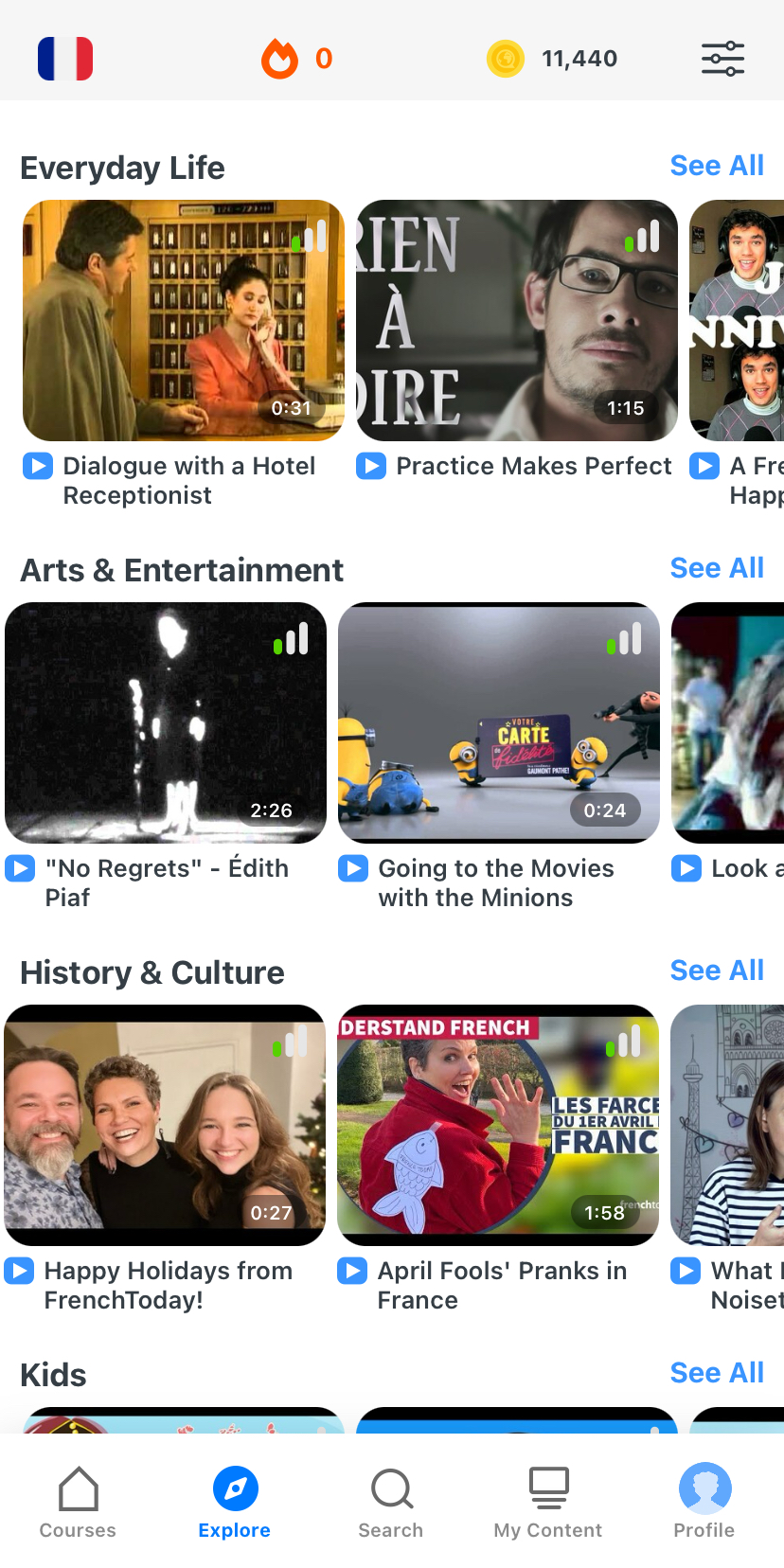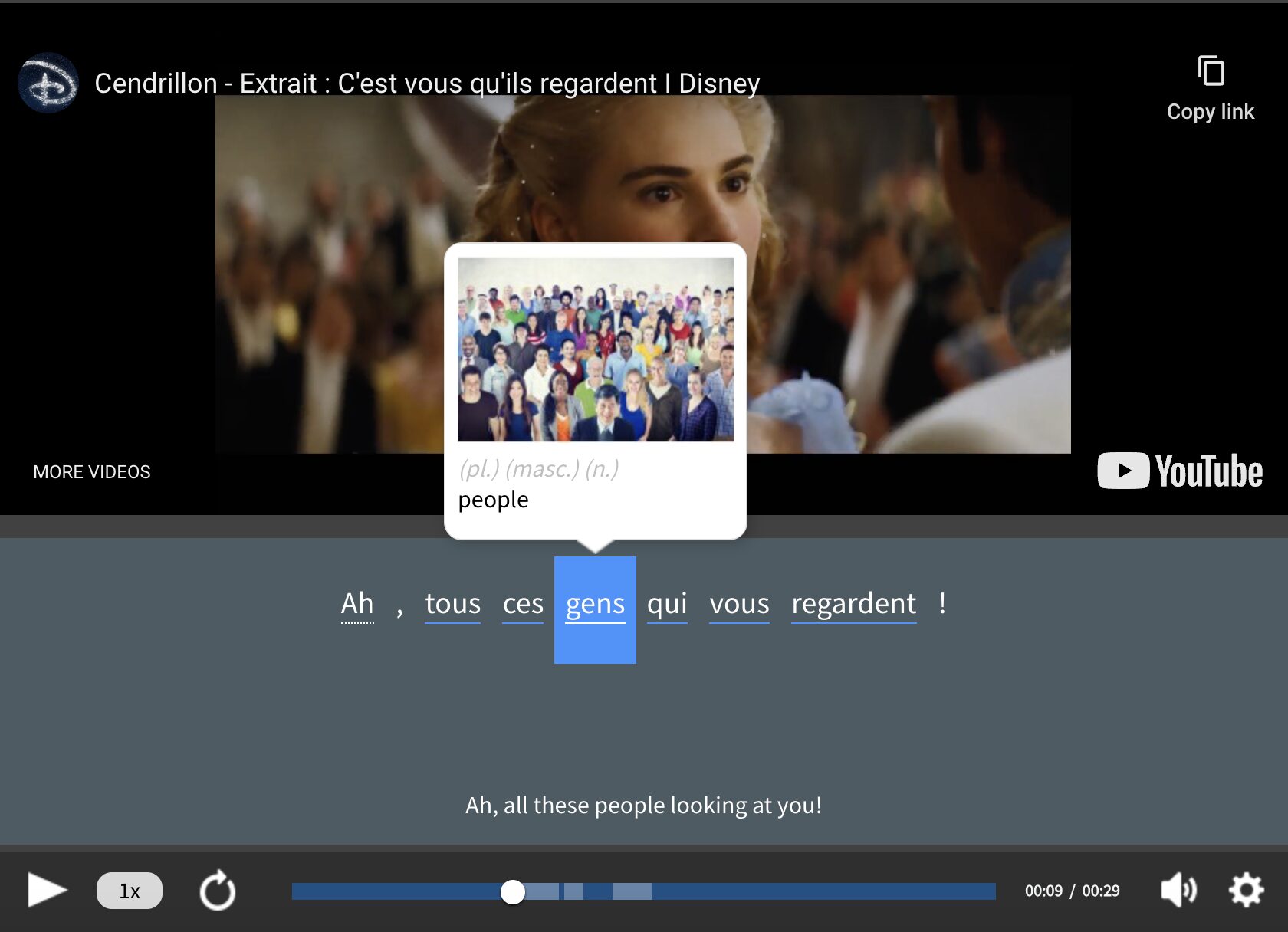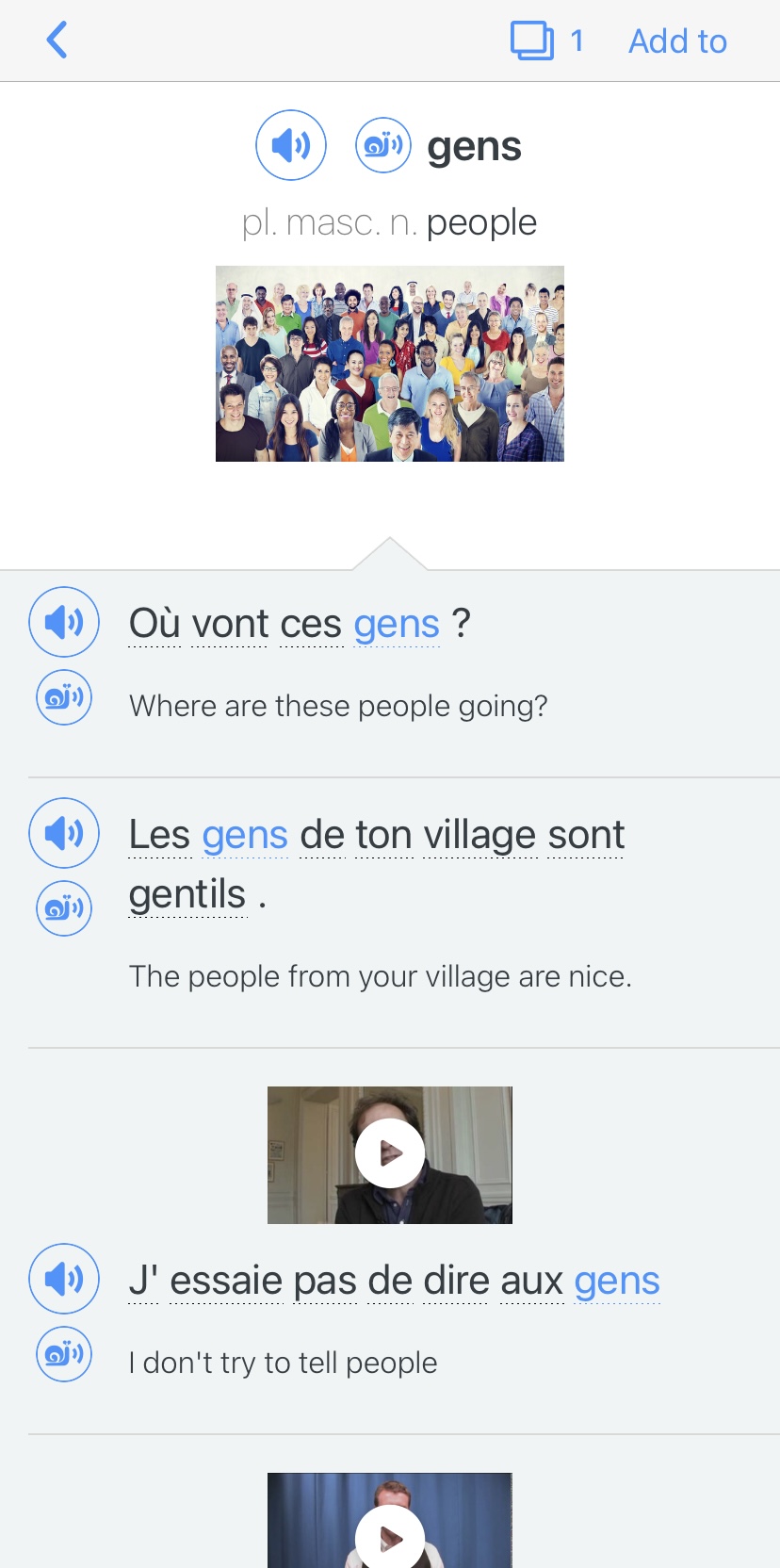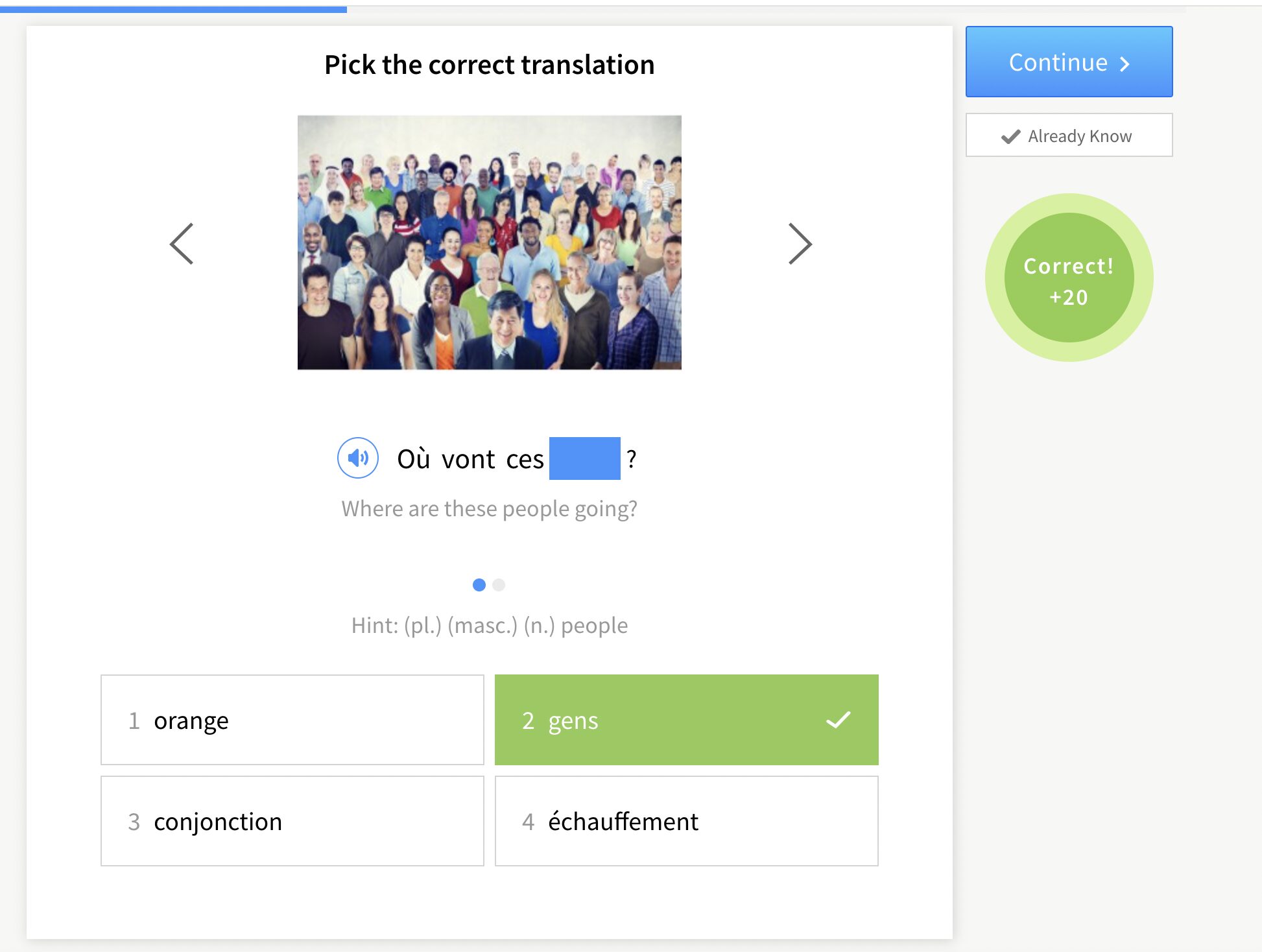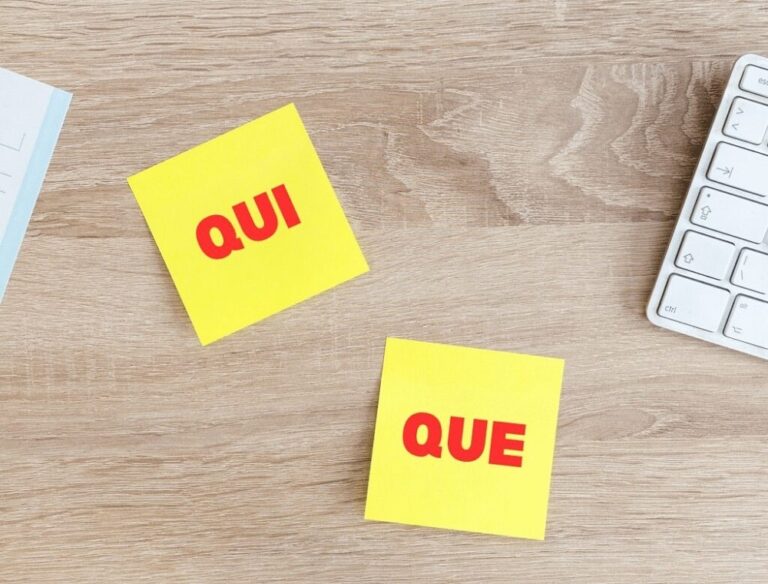Contents
- 1. Play French Songs
- 2. Stream French Television
- 3. Read the News in French
- 4. Think in French
- 5. Write in French
- 6. Change Your Gadgets’ Language Settings
- 7. Use Flashcards to Refresh Vocabulary
- 8. Do Translation Exercises
- 9. Play French Versions of Vocab-related Games
- 10. Chat with French Speakers
- And One More Thing…
French Refresher: 10 Ways to Relearn French

Took French classes several years ago? If you want to remember your hard-earned knowledge of French grammar and hilarious colloquialisms, prioritize practice: You need to practice almost every day in order to remember what you’ve learned and improve upon that.
Today I’ll show you nine ways you can revive and relearn your French to make it a fun, regular part of your daily life.
Download: This blog post is available as a convenient and portable PDF that you can take anywhere. Click here to get a copy. (Download)
1. Play French Songs
You may have heard about “active” and “passive” listening. Active listening means fully concentrating on the audio and interacting with it in some way. Passive listening, on the other hand, means putting audio in the background and not necessarily paying full attention to it (like what you’d do with hours-long audiobooks).
While passive listening can be helpful for absorbing the French accent and other language elements, active listening is more effective for relearning French. Not only can you hear common French words and core grammar in action, but you’re also reminded of how French words sound versus how they’re spelled—which is arguably one of the trickiest aspects of French.
Here are some active listening ideas you can use:
- Summarize what you’ve heard either in writing or out loud. Try to do this in French, if you can.
- Write down words you recognize in a notebook. Then, look up their definitions after you’re done listening. Write down the definitions, too (preferably in French).
- Shadow the audio. In other words, re-listen and imitate what you hear line-by-line.
I recommend that you start this process with easy French songs, like “Le sens de la vie” (“The meaning of life”) by TAL. It’s clear and catchy, and the powerful message will make your day. Though slightly more advanced, “Ta Reine” by Angèle is another good one for learners, as featured on the FluentU French YouTube channel:
You can also check out this list of the best songs for French learners.
2. Stream French Television
Many TV channels from French-speaking countries stream their broadcasts online. Aside from listening practice, they also help you gain insight into French body language, the different cultures of Francophone countries and any new vocabulary or grammar points.
Here’s an example of how you can learn from interviews:
If you’re interested in watching shorter clips with extra language-learning support, you could also try using FluentU.
FluentU takes authentic videos—like music videos, movie trailers, news and inspiring talks—and turns them into personalized language learning lessons.
You can try FluentU for free for 2 weeks. Check out the website or download the iOS app or Android app.
P.S. Click here to take advantage of our current sale! (Expires at the end of this month.)
3. Read the News in French
News items are short yet plentiful—after all, there’s always something new happening every day. With them, you can easily zero in on any gaps in your vocabulary and grammar without worrying about whether you can finish 392 pages worth of French content (as you would with books).
And you don’t have to jump into the French equivalent of The New York Times, either. There are plenty of French news sources specifically designed for language learners, such as News in Slow French (which is exactly what it sounds like) and Learn French with daily podcasts (which features one French news story per episode).
Once you’ve exhausted those options, you can move on to more difficult and authentic French news sources.
4. Think in French
Whenever you’re engaging with any sort of French material, try to resist the temptation to translate it to and from English in your head. Instead, treat it the way a native French speaker would—i.e., think in French as much as possible.
For example, instead of thinking of an apple as an “apple,” think of it as a pomme. Instead of saying “Really?” in response to a family member humblebragging for the umpteenth time, challenge yourself to think merde without rolling your eyes.
The more you think of French like a native speaker would, the faster your fluency will get to native-level.
5. Write in French
This is basically an extension of the tip to “think in French”—except this time, you’re putting your thoughts down on paper.
Feel free to write down as much as you can in French, whether it’s your notes, To-Do list or shopping list. Once you’re ready to “graduate” from penning one-liners, you can progress to writing entire blogs in French.
You don’t need to be an expert in French grammar to have a French-related blog. Just choose any topic you like, and write about it in French. Having a blog can help you track your progress in French—or, at the very least, document French-related topics you’re passionate about.
6. Change Your Gadgets’ Language Settings
Are you practically glued to your phone or computer? If you want to be forced (or, should I say, “strongly encouraged”) to engage with and think in French as much as possible, it might help to activate the français mode of your computer, smartphone or what-have-you. Plus, you’ll pick up a ton of French technology words on top of the vocab you already know.
7. Use Flashcards to Refresh Vocabulary
Since you’re at the “refresher” stage rather than the “completely new learner” stage, chances are you already have a stash of French vocab hiding in the nooks and crannies of your mind. Your challenge is to figure out which words you’ve already mastered and which ones you haven’t—and that’s where flashcards come in.
For brushing up on your French, I strongly recommend using the best French flashcard apps you can find. Not only are they better-looking and easier to manage than traditional index card flashcards, but they also have the ability to easily track the words you already know versus the ones you don’t.
8. Do Translation Exercises
Another way to figure out how much French you know (and how much you have yet to learn) is to practice translating to and from French.
You can do this with any authentic French material. If you’re a beginner, I suggest starting out with shorter content like songs, news items and blog posts. If you’re already an advanced learner, challenge yourself by translating an entire book. It might help to compare and contrast your work with the official French translation of that book (if it’s available).
While you’re at it, keep a French translator app handy so you can quickly look up words when you need to. Don’t worry too much about using the right words or grammar while you’re translating—you can always smooth out the rough edges once you’re done.
9. Play French Versions of Vocab-related Games
If you’re already near or at the advanced stage of learning French, you might be able to get through French-language video games already. But if you still need to work on vocabulary, I suggest using games like:
- Balderdash. My friends and I used to play a simplified version of this with only a French-English dictionary. Each person takes turns randomly choosing a word from the dictionary. The other players then guess what it means in French.
- Citadelles (Citadels). There are different versions of this game. But in a nutshell, for each round, you take on the role of a different medieval character with strengths and weaknesses. With the cards you collect, you attempt to earn money and build a city. You’ll feel more confident with your French after correctly figuring out characters like Voleur (thief) and Condottière (warlord).
10. Chat with French Speakers
Finally, if you truly want to brush up on your French, you need to find native speakers to help you practice the language and provide feedback. And you don’t have to book a flight to an actual French-speaking country, either—just log on to any language exchange website where there are French speakers in spades.
Alternatively, you could find French language groups in your area via Meetup. You could also book a trial lesson with a French tutor who fits your needs (schedule, budget, etc.) and who can pinpoint specific areas of improvement in your language skills.
Even if you’ve already taken French classes, consistent out-of-the-classroom practice is key to solidifying what you’ve learned and helping you retain that knowledge for the long term.
And practice doesn’t have to be difficult—just fill your spare moments with French and create your own French refresher course.
Download: This blog post is available as a convenient and portable PDF that you can take anywhere. Click here to get a copy. (Download)
And One More Thing…
If you’re like me and prefer learning French on your own time, from the comfort of your smart device, I’ve got something you’ll love.
With FluentU’s Chrome Extension, you can turn any YouTube or Netflix video with subtitles into an interactive language lesson. That means you can learn French from real-world content, just as native speakers actually use it.
You can even import your favorite YouTube videos into your FluentU account. If you’re not sure where to start, check out our curated library of videos that are handpicked for beginners and intermediate learners, as you can see here:
FluentU brings native French videos within reach. With interactive captions, you can hover over any word to see its meaning along with an image, audio pronunciation, and grammatical information.
Click on a word to see example sentences and other videos where it's used in different contexts, then add it to your flashcards. For example, if I tap on the word "gens," this is what pops up:
Want to make sure you remember what you've learned? We’ve got you covered. Each video comes with exercises to review and reinforce key vocab. You’ll get extra practice with tricky words and be reminded when it’s time to review so nothing slips through the cracks.
The best part? FluentU tracks everything you’re learning and uses that to create a personalized experience just for you. Start using the FluentU website on your computer or tablet or, better yet, download our app from the App Store or Google Play.
Click here to take advantage of our current sale! (Expires at the end of this month.)


